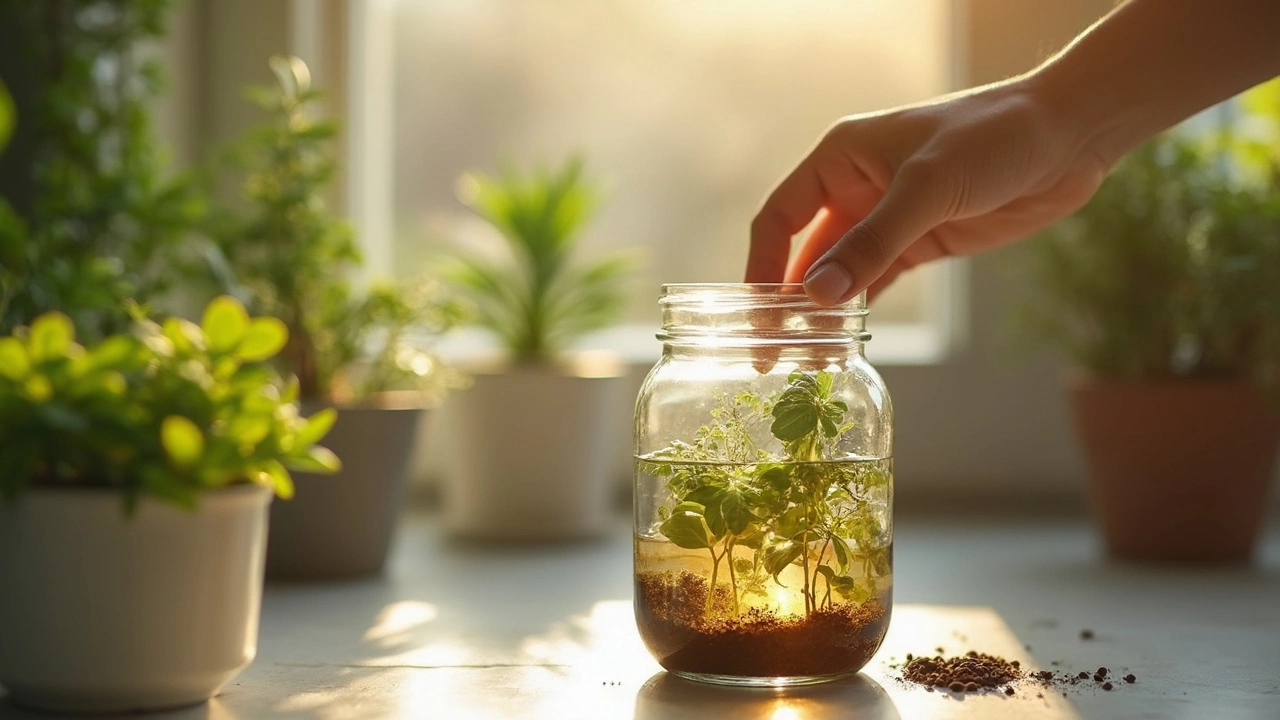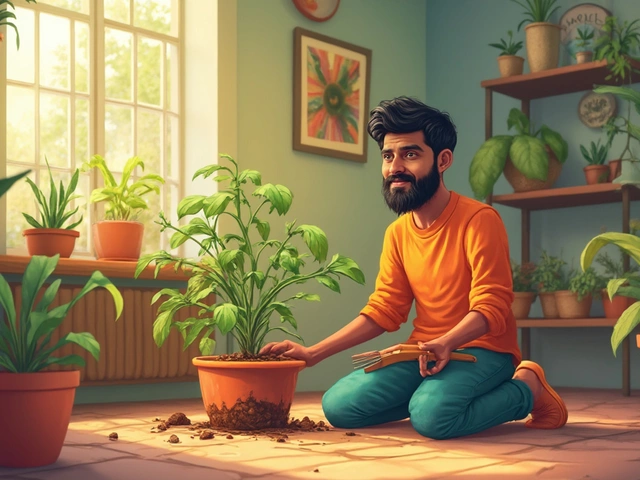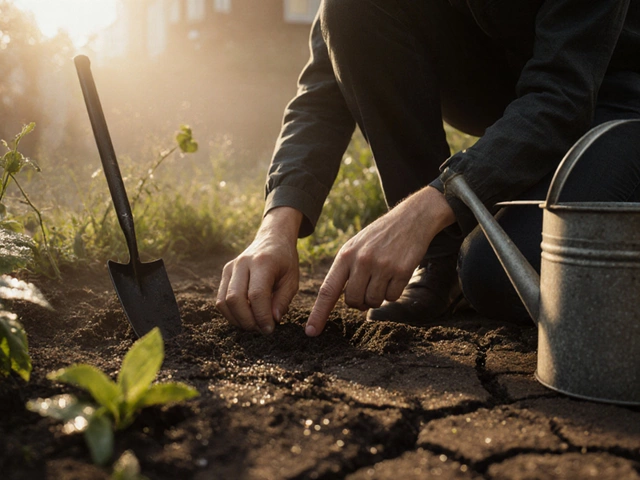Ever wondered if plain water is doing enough for your indoor plants? Sure, water is essential, but adding a little extra something can give your greenery a nice boost. Imagine amping up your plants' growth with a few tweaks to what's in your watering can.
First off, the basics: plants drink more than just H2O. They absorb a whole cocktail of nutrients dissolved in that life-giving liquid. Depending on your plant type, it might need more than what water alone can supply. Adding a few common kitchen ingredients can sometimes make a huge difference.
Take vinegar, for instance. It might sound odd, but a tiny splash of apple cider vinegar in the watering can could gently adjust the pH level, especially helpful for acid-loving plants like azaleas. Just don't overdo it - a teaspoon per gallon usually suffices. Remember, moderation is key, or you could end up doing more harm than good.
- Understanding Plant Needs
- Water Additives for Plant Health
- DIY Natural Boosters
- Avoiding Common Mistakes
Understanding Plant Needs
When it comes to keeping indoor plants happy, knowing their needs is a crucial first step. Just like us, plants have their own specific diet. It's important to understand what makes them thrive beyond basic watering.
Essential Nutrients
Plants need a variety of nutrients to stay healthy. The big three are nitrogen, phosphorus, and potassium, often referred to as NPK. Each plays a unique role: nitrogen fuels growth, phosphorus supports roots and blooms, and potassium boosts overall plant health. When choosing a balanced plant food, these three elements are a good starting point.Aside from these, plants also benefit from little extras like magnesium and calcium. These help with photosynthesis and cell wall structure, respectively. Products labeled 'complete plant food' usually cover all these bases.
Light and Humidity
Don't forget, water isn't the only thing plants crave. They require proper light and humidity levels as well. Depending on the type of plant, they might prefer direct sun or a shadier spot. Ferns, for example, relish humidity – a bathroom with natural light could be their ideal habitat.Signs of Trouble
How can you tell if your plant isn't getting what it needs? Yellowing leaves, stunted growth, or brown leaf tips can all signal a nutrient deficiency. Regularly inspecting your plants helps catch these issues early. Sometimes, a simple adjustment in your watering routine, like adding specific nutrients or changing water frequency, can solve the problem.Plant care isn't just about quenching their thirst; it's about maintaining a delicate balance that supports every aspect of their growth. So next time you grab the watering can, think about what else you can do to make your green friends flourish.
| Nutrient | Role |
|---|---|
| Nitrogen | Encourages leafy growth |
| Phosphorus | Develops strong roots and flowers |
| Potassium | Supports overall health |
Water Additives for Plant Health
If you're a fan of indoor plants, knowing what to mix in their water could be your secret weapon. A simple addition can turn your basic tap water into a nutritious drink for your leafy friends. Here's some practical intel on water additives that boost plant health.
Coffee Grounds
You might love your morning cup of joe, and guess what? Some plants do too. Coffee grounds can add a touch of nitrogen, which many houseplants crave. Simply dilute leftover cold coffee with water—think one part coffee to three parts water. Make sure it's not sweetened or flavored, as extra sugar or dairy isn't plant-friendly.
Banana Peel Water
Potassium is another nutrient for robust plant growth, and banana peels are loaded with it. To make banana peel water, soak a couple of peels in a jar of water for a couple of days, then use the infused water to hydrate your plants. This natural fertilizer is an eco-friendly way to nourish your indoor plants.
Epsom Salt
Epsom salt isn’t just for relaxing baths; it’s rich in magnesium and sulfur, which are superb for plant growth. Dissolve about a tablespoon of Epsom salt in a gallon of water and use it to feed your plants. This mixture is especially beneficial for tomatoes and roses, though it's wise to check your specific plants' needs.
Hydrogen Peroxide
Occasionally, adding a bit of hydrogen peroxide to your watering can helps aerate the soil. Add around one teaspoon of hydrogen peroxide per gallon of water to promote root health. It can also help tackle those pesky root rot issues!
| Water Additive | Benefits | Recommended Dose |
|---|---|---|
| Coffee Grounds | Nitrogen boost, acidifies soil | 1:3 ratio with water |
| Banana Peel Water | Potassium-rich | 1-2 peels per jar of water |
| Epsom Salt | Magnesium & sulfur | 1 tbsp per gallon |
| Hydrogen Peroxide | Root health, aerates soil | 1 tsp per gallon |
Remember, every plant has its own quirks, so it’s good to experiment in small batches and observe how your plants respond. Happy growing!

DIY Natural Boosters
If you want to give your indoor plants an extra boost without hitting the store, your kitchen might just hold everything you need. Natural additives can be surprisingly effective, and they're usually right under your nose.
Coffee Grounds
Got a morning coffee habit? Don't toss those grounds. They are a goldmine of nitrogen, a key nutrient that helps plants grow lush leaves. Sprinkle used coffee grounds lightly on the soil or mix them with your potting mix. Just be cautious not to overwhelm your plants by using them too frequently.
Banana Peels
Bananas are not just good for you; their peels are great for plant care too. Rich in potassium, they help with root development and bloom quality. You can chop up a banana peel and bury it in the soil or soak it in water for a few days, creating a nutrient-rich drink for your leafy friends.
Eggshells
Don't forget about those eggshells - they pack a punch of calcium, ideal for strengthening plant cell walls. Rinse and crush them into a fine powder before sprinkling onto the soil. Watch as your plants enjoy this crunchy, nutrient-rich treat.
DIY Compost Tea
Got a compost bin? Brew your own compost tea. Just take a shovelful of compost, steep it in a bucket of water for a couple of days, stirring occasionally. Strain and water your plants with this homemade elixir. It's like giving your plants a multivitamin!
Useful Tip:
Always monitor how your plants respond to these natural boosters. If you notice any sign of distress, like wilting or spots, cut back or try a different approach. Plants can be a bit picky, but once you hit the right balance, they'll thrive.
Avoiding Common Mistakes
Tending to indoor plants might seem straightforward, but even seasoned gardeners can make some slip-ups. Let's nail down a few common blunders so you can steer clear of them.
Overwatering Woes
One of the usual suspects of plant demise is giving them too much water. Sounds counterintuitive, right? But many indoor plants prefer their soil a bit on the dry side. Sticking your finger an inch into the soil can help gauge moisture; if it feels dry, it’s time for hydration. Otherwise, hold off!
Skipping the Drainage Drill
Ever noticed that your pots have drainage holes? Use them! Without proper drainage, water pools at the bottom, suffocating your plant’s roots and leading to rot. Ensure your chosen pots have holes, and consider placing a small layer of rocks or bits of broken pottery at the bottom for good measure.
Wrong Additives Ratio
When you’re adding anything to your watering routine, like those plant nutrition boosts, it’s crucial to get the quantities right. Less is more here—not every watering needs extras. Follow instructions and avoid the temptation to pour in a little extra for good luck.
Inconsistent Routine
Plants thrive on consistency, so a random watering schedule isn’t ideal. Set up a reminder or link it to another daily activity like your morning coffee. Getting into a rhythm ensures your leafy friends always get what they need when they need it.
| Mistake | Consequence |
|---|---|
| Overwatering | Root rot |
| No drainage | Drowned roots |
| Wrong additive ratio | Soil imbalance |
By avoiding these pitfalls, your indoor garden will thank you with vibrant, lush growth!




